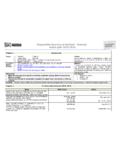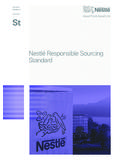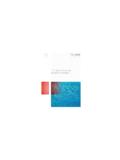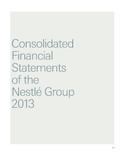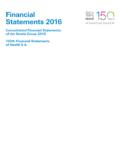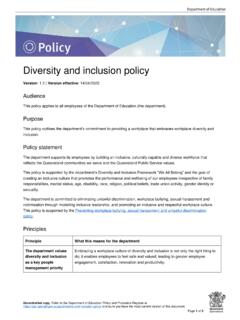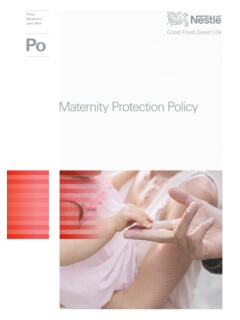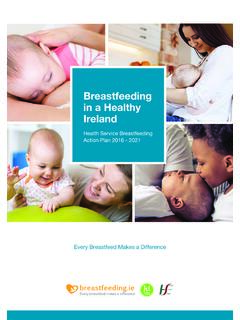Transcription of The Nestlé Policy and Procedures for the Implementation of ...
1 PolicyMandatorySeptember 2017 The nestl Policy and Procedures for the Implementation of the WHO International Code of Marketing of Breast Milk SubstitutesPolicyMandatorySeptember 2017 Issuing departmentGlobal Public AffairsTarget audienceAll employees, interested members of the publicApproverExecutive Board of nestl nestl Principles and Policies, Standards and Guidelinescan be found in NestleDocs, on the NestCopyright and confidentialityAll rights belong to Nestec Ltd., Vevey, Switzerland. 2017, Nestec : The Management Responsibilities section has been updated in March 2019 to reflect internal organizational Nestec Ltd., Corporate Identity & Design, Vevey, Switzerland1 nestl Policy and Procedures for the Implementation of the WHO Code 2 Introduction 3 The importance of breastfeeding 3 Supporting & protecting breastfeeding 4 The evolution of our Policy 5 The scope of the Policy & Procedures 6 5 Principles of our WHO Code Management System 7 Compliance 8 Good Governance 9 Transparency 9 Constructive Engagement 10 Continuous Improvement 11 Going forward.
2 Working together 13 Annex A nestl Procedures for the Implementation of the WHO Code in higher-risk Countries 25 Annex B WHO International Code of Marketing of Breast Milk Substitutes (Article 3) Definitions Table of Contents2 nestl Policy and Procedures for the Implementation of the WHO CodeNestl s purpose is to enhance quality of life and contribute to a healthier future. Supporting the first 1000 days of life is fundamental to this purpose. It is a privilege to accompany many millions of parents, babies and caregivers all over the world on this journey, and to do all we can to make sure children have the best possible nutritional start in life. We value the trust our consumers place in us, and it is our responsibility to respect this trust by acting in their best interests at all times.
3 In 1867, our founder Henri nestl invented farine lact e to save the life of a child suffering from malnutrition. Today, we are inspired by his example to enhance the wellbeing and health of babies, by empowering their parents, caregivers and healthcare believe breast milk is the best nutritional choice for an infant. breastfeeding plays a critical role in a baby s growth and development during the first 1000 days. It is the ideal source of nutrition, helps to build a strong immune system and fosters a strong bond between mother and is why we promote and support the World Health Organization (WHO) infant feeding recommendations, and why we are committed to supporting and protecting breastfeeding .
4 Healthcare professionals play a key role in providing parents with objective nutrition advice for feeding their infants and young children. When in consultation with their healthcare professionals, mothers and families have determined that optimal breastfeeding is not possible, it is vital their babies are fed with the highest quality, scientifically proven breast milk substitutes to help them thrive. We are guided by the WHO International Code of Marketing of Breast Milk Substitutes as to market our infant formulas responsibly. The Policy and Procedures in this document explain how we support and protect breast-feeding across our company and within our sphere of influence. Compliance with national legislation implementing the WHO Code, as well as this Policy and Procedures , is a central expression of our values, rooted in respect.
5 It is mandatory for all nestl employees and any third party acting with our authorisation. Securing healthy and prosperous futures for children around the world is an aspiration that unites all concerned stakeholders, including nestl . To achieve this, we will continue to play a leading role through constructive engagement with parents, governments, healthcare providers, civil society and others, to do all we can to contribute to a healthier future SchneiderChief Executive Officer nestl Introduction3 nestl Policy and Procedures for the Implementation of the WHO Code The importance of breastfeedingThe nutrition babies receive during their first 1000 days has an important influence on their lifelong health.
6 We believe that breast milk is the ideal source of nutrition for babies. That is why we support and promote the WHO recommendation of six months exclusive breastfeeding , followed by the introduction of adequate nutritious complementary foods, along with sustained breastfeeding up to two years of age and plays a key role for the health and development of infants by: Providing ideal nutrition for healthy growth and development; Helping to build up a strong immune system; Encouraging a strong bond between mother and baby. It is also beneficial for the mother s health: Enabling her to recover faster after childbirth; Protecting her against certain diseases. In cases where breastfeeding is not an option for babies, it is critical that they are fed with the highest quality, scientifically-proven alternative to help them grow, thrive and stay healthy.
7 When seeking an alternative to breast milk, it is essential that families and caregivers make informed decisions. We recommend that they speak with a healthcare professional (HCP) when considering how and what to feed their infants. We are committed to supporting and protecting breastfeeding by continuing to implement an industry-leading Policy to market breast milk substitutes responsibly. Supporting & protecting breastfeedingSupporting breastfeedingWe have a responsibility to support breastfeeding and we do so through a range of activities, including: Educating parents and caregivers on optimal nutrition and appropriate feeding practices in the first 1000 days of life including breastfeeding as the best nutritional start in life.
8 Supporting a conducive environment to breastfeed: Our Global Maternity Protection Policy gives female employees up to six months maternity leave, as well as providing flexible work arrangements, and hundreds of breastfeeding rooms in our facilities. We partner with governments and civil society around the world to make breastfeeding rooms available. Protecting breastfeedingWe also have a responsibility to protect breastfeeding , which we do by continuing to implement an industry-leading Policy to market breast milk substitutes a minimum, globally, this means complying with the WHO International Code of Marketing of Breast Milk Substitutes (WHO Code), and all relevant subsequent World Health Assembly (WHA) resolutions as implemented by governments all over the world.
9 In addition to this, in higher risk countries 1, we apply the provisions of Annex A when they are stricter than local legislation implementing the WHO Code, unless otherwise mandatorily required by local The term Higher-risk countries is defined under the section Geographical scope4 nestl Policy and Procedures for the Implementation of the WHO Code The evolution of our policyIn 1981, the World Health Organization (WHO) adopted the WHO International Code of Marketing of Breast Milk Substitutes. It is more commonly known as the WHO Code . It is a set of recommendations for WHO s Member States to regulate the marketing of breast milk substitutes, feeding bottles and teats.
10 It states that governments should take action to give effect to its aim and principles, through legislation or other February 1982, nestl first issued a set of instructions on how to implement the WHO Code into our infant formula sales and marketing practices. In October 1982 these instructions were revised after consultation with many parties, including the WHO and the United Nations International Children s Emergency Fund (UNICEF). Subsequent revisions of the Policy took place in 1996, and 2004, based on practical experience and the issuance of WHA Resolutions in relation to the WHO Code. In 2010 we completely revised our Policy and Procedures to meet the FTSE4 Good Inclusion Criteria for the Marketing of Breast Milk Substitutes.



